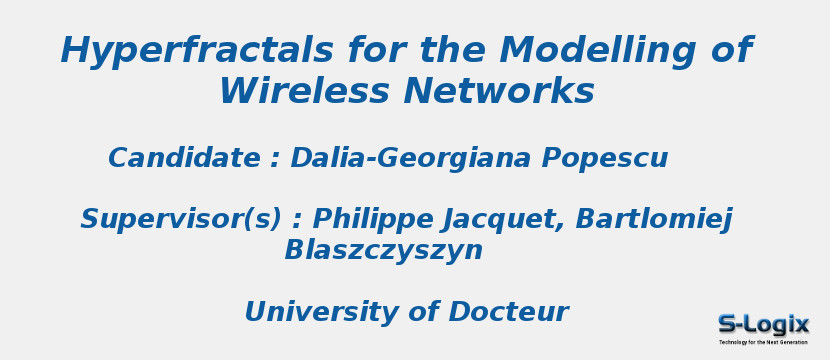Research Area: Wireless Sensor Networks
The modeling of wireless networks with stochastic geometry has become popular in the recent decades. By means of point processes, the positions of wireless infrastructure and users are represented with the aim of computing metrics of interest like capacity, routing delay, broadcast time, etc. This has been done successfully for technologies such as 3G/LTE/Wi-Fi yet, with the arrival of 5G NR, the necessity for rethinking the models for the communication scenario has become paramount. In this thesis we present a novel model for the locations of devices in urban communications networks.
The model combines stochastic geometry with fractal geometry and it is called ``hyperfractal". The model exists in two options: the option for modeling the densities of cars on streets and the option for modeling the densities and repartition of auxiliary communication infrastructure. We present in detail the proposed model and its basic properties. In order to complete the description of the model and advocate for its ease of use, we provide a method for computing the fractal dimension of cities. The usefulness of the model is showcased throughout this thesis by several wireless networks applications. One application evaluates the achievable trade-offs between delay and energy consumption for a V2X network in urban environment modeled with hyperfractals. A second application consists into studying the broadcast in a V2V delay-tolerant network. Achievable limits are presented together with a phenomenon specific to hyperfractals: the teleportation phenomenon, which allows an acceleration of the broadcast.
Name of the Researcher: Dalia-Georgiana Popescu
Name of the Supervisor(s): Philippe Jacquet, Bartlomiej Blaszczyszyn
Year of Completion: 2018
University: University of Docteur
Thesis Link: Home Page Url
